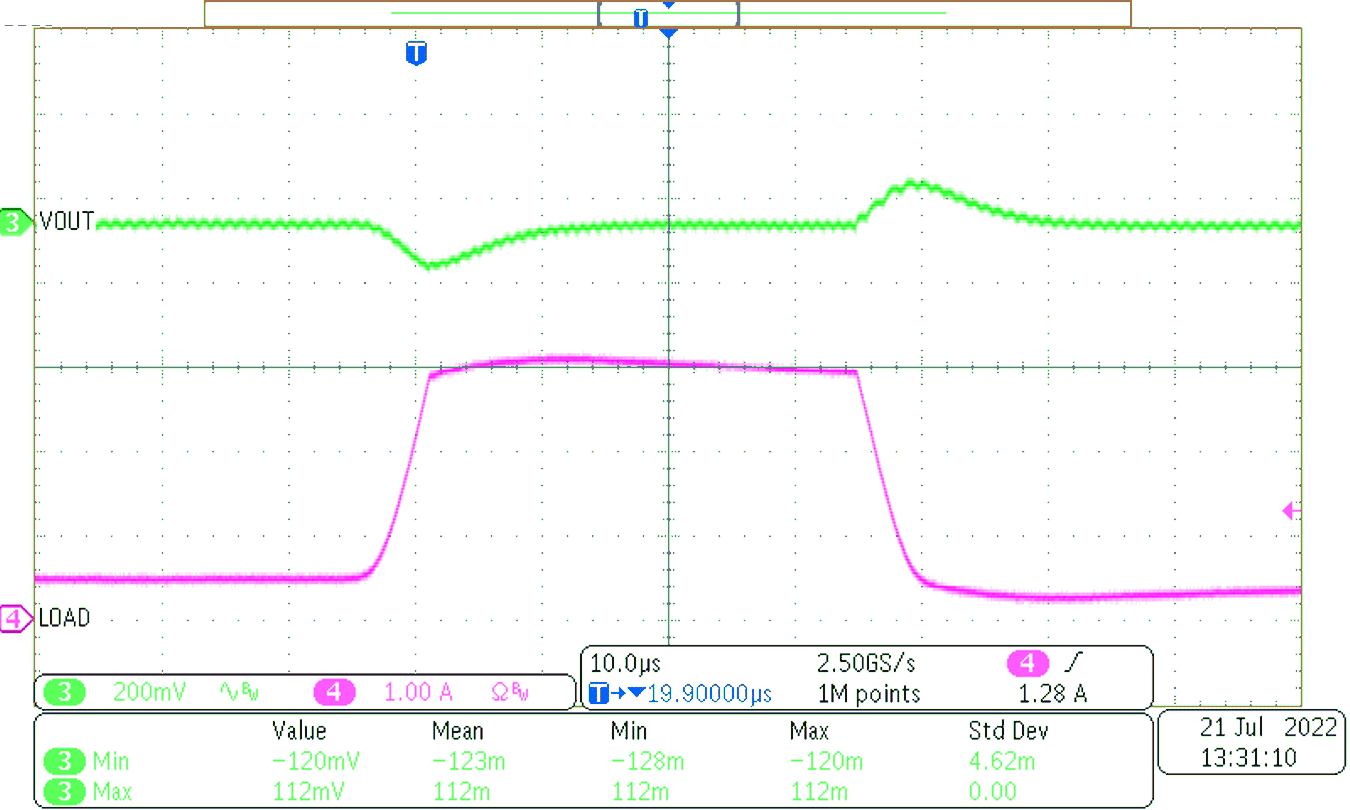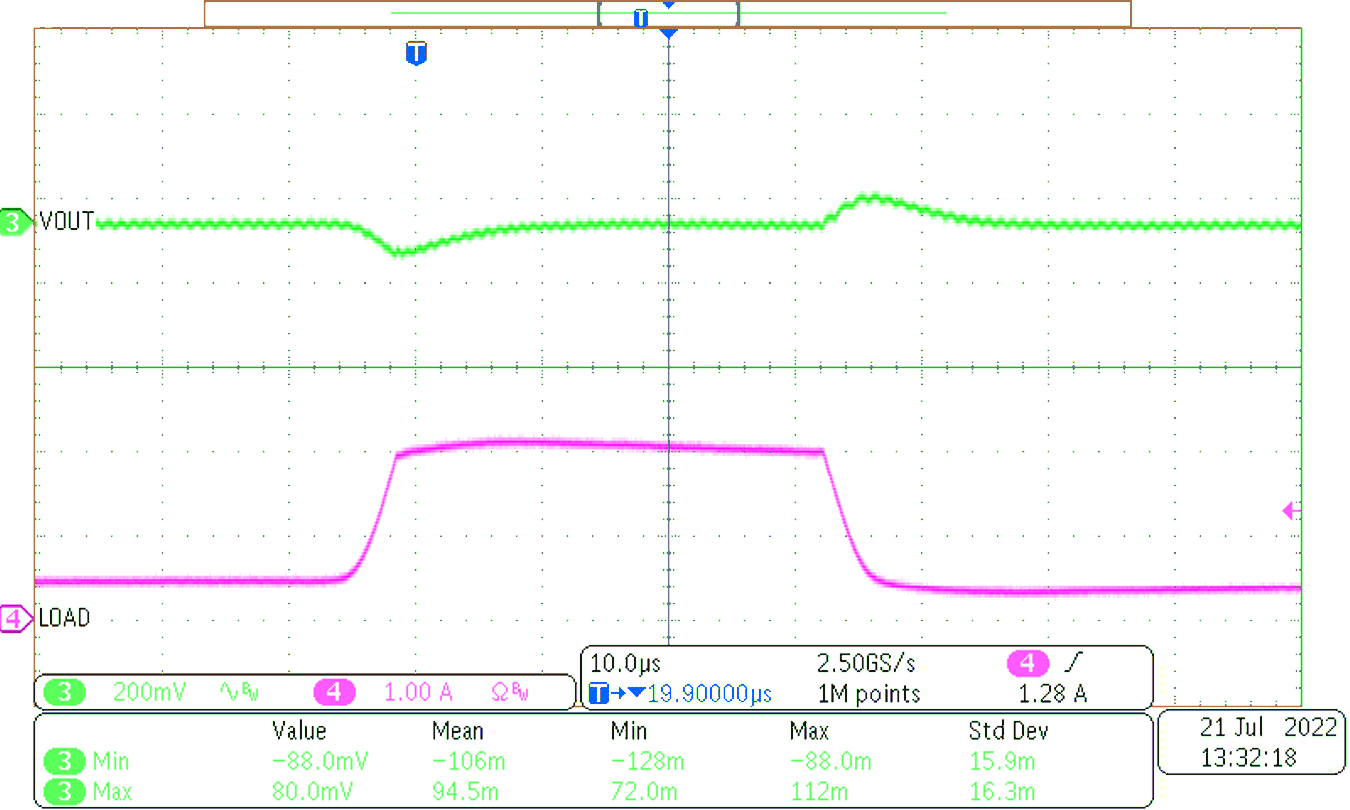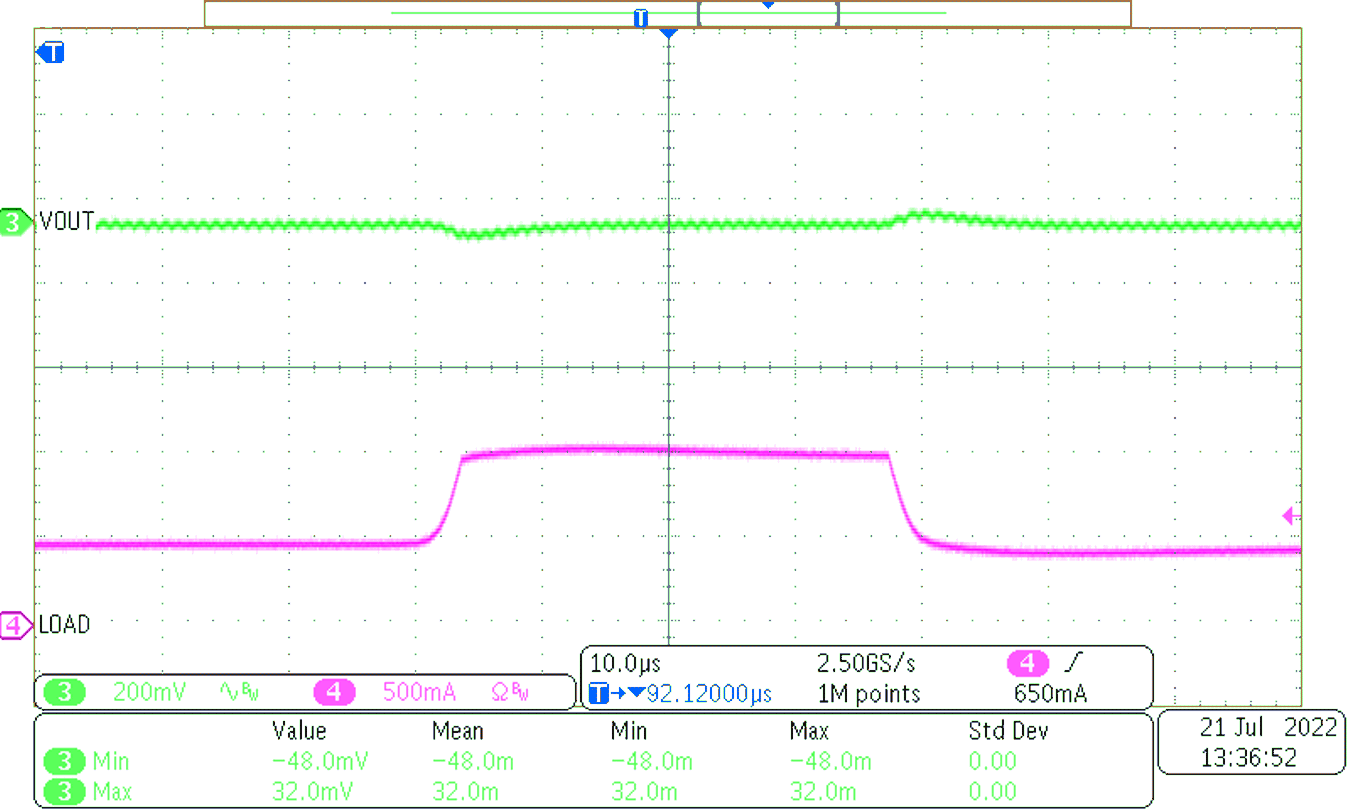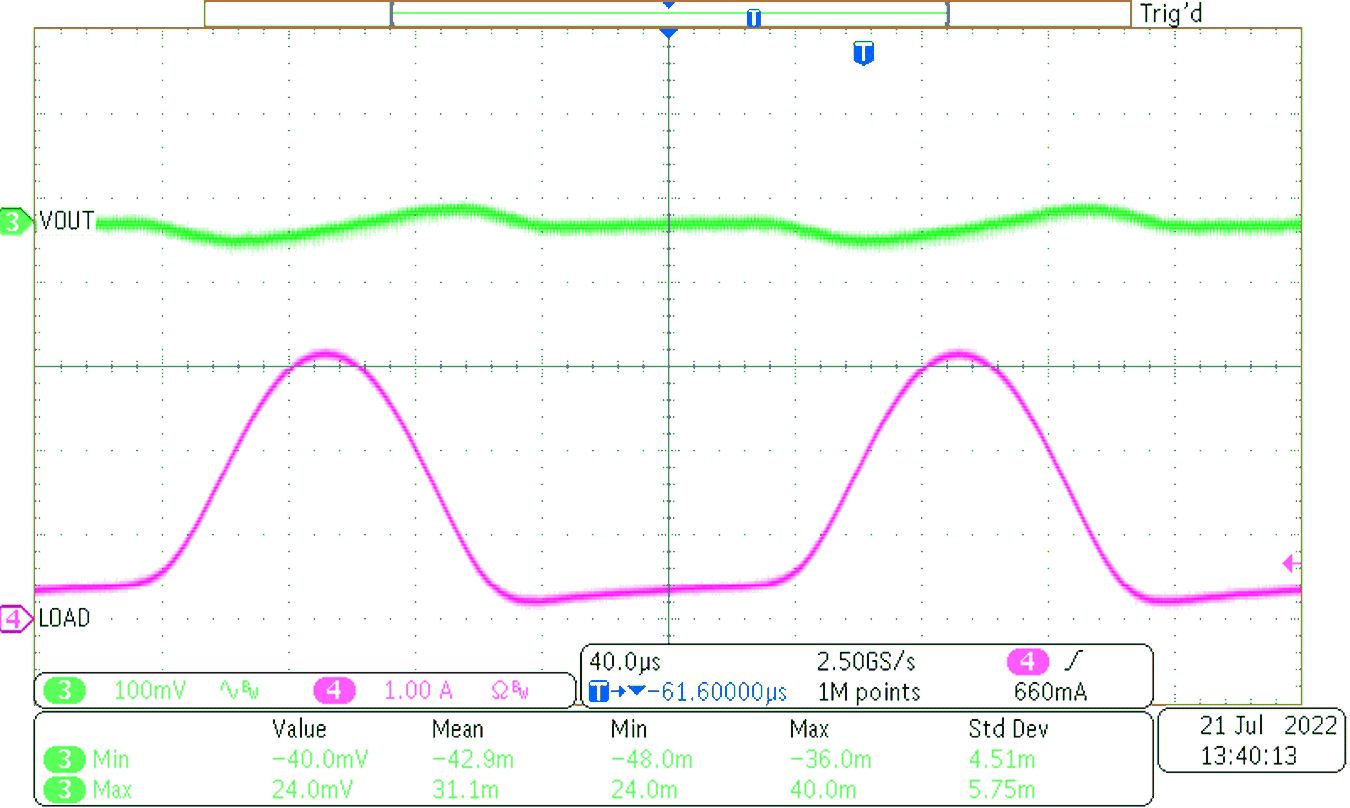TIDUC99 August 2022 TPSM82903
3.3.3 Load Transient
Figure 3-4 shows the transient response from 0.5-A to 3-A with 12-V input.
 Figure 3-4 Load Transient 500-mA to 3-A
with 12-Vin
Figure 3-4 Load Transient 500-mA to 3-A
with 12-VinFigure 3-5 shows the transient response from 0.5-A to 2-A with 12-V input.
 Figure 3-5 Load Transient 500-mA to 2-A
with 12-Vin
Figure 3-5 Load Transient 500-mA to 2-A
with 12-VinFigure 3-6 shows the transient response from 0.5-A to 1-A with 12-V input.
 Figure 3-6 Load Transient 500-mA to 1-A
with 12-Vin
Figure 3-6 Load Transient 500-mA to 1-A
with 12-VinA sinusoidal load is applied with 12-Vin. Figure 3-7 shows the transition between Power Save Mode (PSM) during light load to Pulse Width Modulation (PWM) mode at heavy load.
 Figure 3-7 PSM to PWM Transition with
12-Vin
Figure 3-7 PSM to PWM Transition with
12-Vin